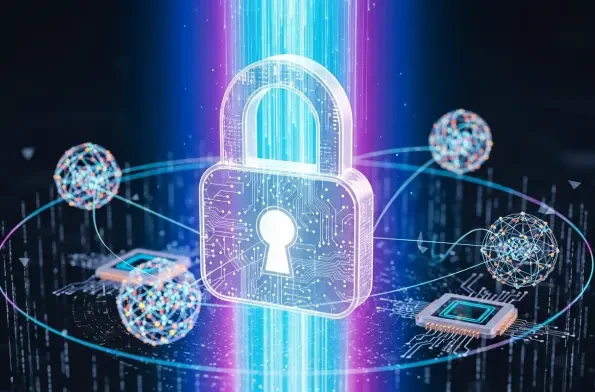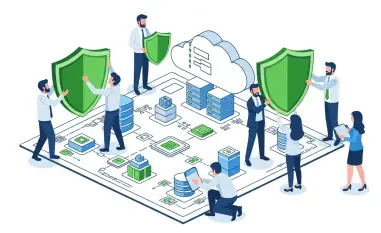Imagine a world where the most secure data, from government secrets to personal financial records, could be unlocked in mere seconds by an advanced machine, highlighting the urgent need for new protective measures. This is the looming reality posed by quantum computing, a technology capable of shattering the encryption methods that have safeguarded digital communications for decades. As quantum advancements accelerate, the urgency to protect sensitive information has never been greater. Post-Quantum Cryptography (PQC) emerges as a vital defense, designed to withstand the computational power of quantum systems. This review explores the evolution, mechanisms, and real-world impact of PQC, shedding light on its role in securing data against an imminent technological revolution.
Understanding the Foundations of Post-Quantum Cryptography
At its core, Post-Quantum Cryptography represents a paradigm shift in securing digital information, specifically engineered to counter the threats posed by quantum computers. Unlike traditional cryptographic systems such as RSA and ECC, which rely on the computational difficulty of factoring large numbers or solving discrete logarithms, PQC leverages mathematical problems believed to be resistant to quantum algorithms. The rise of quantum computing, with its potential to execute calculations at unprecedented speeds, has exposed vulnerabilities in classical encryption, prompting the development of these new methods.
The historical backdrop of cryptography reveals a constant race between code-makers and code-breakers, with each technological leap demanding stronger defenses. The advent of quantum theory in the early 20th century laid the groundwork for today’s concerns, but it wasn’t until recent decades that the practical threat of quantum machines became tangible. PQC has thus emerged as a proactive response, aiming to fortify data protection before quantum systems become widely operational. Its significance extends across multiple domains, from national security to corporate privacy, highlighting a universal need for readiness.
In today’s cybersecurity landscape, the stakes are extraordinarily high. Governments, industries, and individuals rely on encryption to protect everything from classified communications to online transactions. With adversaries already employing strategies like “Harvest Now, Decrypt Later”—collecting encrypted data for future decryption—PQC stands as a critical barrier. This review delves into how this technology is poised to redefine security standards in an era where digital threats are evolving faster than ever.
Core Principles and Mechanisms Behind PQC
Exploring Quantum-Resistant Algorithms
The foundation of Post-Quantum Cryptography lies in a diverse set of algorithms crafted to resist both classical and quantum computational attacks. Lattice-based cryptography, for instance, relies on the complexity of problems involving geometric structures in high-dimensional spaces, making it exceptionally difficult for quantum systems to solve. Similarly, code-based cryptography uses error-correcting codes, a concept rooted in information theory, to create secure encryption that withstands quantum processing power.
Another notable approach is hash-based cryptography, which focuses on digital signatures and is particularly valued for its simplicity and proven security against quantum threats. These algorithms differ significantly from traditional methods in terms of computational requirements and key sizes, often demanding more resources, which can impact performance. However, their ability to maintain security in a quantum environment makes them indispensable for future-proofing data protection.
Balancing security with efficiency remains a key concern for developers of these algorithms. While lattice-based systems offer robust defense, they often require larger key sizes, leading to slower processing times. Ongoing research aims to optimize these methods, ensuring they can be integrated into existing infrastructures without sacrificing speed or usability, a critical factor for widespread adoption across sectors.
NIST’s Role in Standardizing PQC
A pivotal force in the advancement of PQC is the National Institute of Standards and Technology (NIST), which has spearheaded efforts to standardize quantum-resistant algorithms. Since launching its standardization process several years ago, NIST has finalized key standards such as FIPS 203, 204, and 205, focusing on encryption and digital signatures. These standards provide a blueprint for federal agencies and private entities to transition to secure systems over the coming years.
The significance of NIST’s work cannot be overstated, as it transforms theoretical research into actionable frameworks for implementation. The finalized standards mark a shift from speculative development to practical deployment, mandating a multi-year migration for organizations to adopt these new cryptographic methods. Additionally, NIST continues to evaluate further candidates, ensuring a pipeline of robust solutions to address emerging challenges.
Beyond setting benchmarks, NIST’s efforts foster collaboration between academia, industry, and government, driving innovation in the field. The standardization process also serves as a global reference point, encouraging international alignment on PQC practices. As these standards evolve, they pave the way for a unified approach to combating quantum threats, reinforcing trust in digital security infrastructures.
Recent Advancements Shaping Post-Quantum Cryptography
The field of PQC is witnessing rapid progress, fueled by both technological breakthroughs and heightened awareness of quantum risks. NIST’s recent announcements of finalized standards have catalyzed action, prompting organizations to prioritize the integration of quantum-resistant solutions. Alongside this, cutting-edge research continues to explore novel cryptographic schemes, aiming to enhance the efficiency and scalability of existing algorithms.
Industry leaders and policymakers are increasingly vocal about the need for early adoption, recognizing that preparation cannot wait for fully operational quantum computers. Tech giants and cybersecurity firms are investing heavily in pilot projects to test PQC integration within current systems, identifying potential bottlenecks and solutions. This proactive stance reflects a broader trend of shifting from reactive to preventive cybersecurity measures.
Moreover, global collaboration is gaining momentum, with international bodies aligning on shared goals for quantum-safe encryption. Conferences and working groups dedicated to PQC are fostering dialogue on best practices, while governments are issuing mandates to accelerate adoption. These developments underscore a collective urgency to safeguard digital ecosystems against a transformative technological threat.
Real-World Applications and Implementations of PQC
Post-Quantum Cryptography is no longer a theoretical concept but a practical tool being deployed across diverse sectors. Federal governments, under mandates like those from NIST, are leading the charge by incorporating PQC into systems handling classified and sensitive data. This ensures that critical communications remain secure even as quantum capabilities advance, setting a precedent for other entities to follow.
In the financial sector, PQC is being utilized to protect transactions and customer information, addressing vulnerabilities in online banking and payment systems. Institutions are piloting quantum-resistant encryption to secure data transfers, recognizing the catastrophic impact a breach could have on trust and economic stability. These implementations demonstrate the technology’s adaptability to high-stakes environments where security is paramount.
Critical infrastructure, such as power grids and telecommunications networks, also benefits from PQC adoption. Case studies reveal pilot projects where quantum-safe algorithms have been integrated into control systems, mitigating risks of cyber-attacks that could disrupt essential services. These real-world examples highlight PQC’s potential to fortify the backbone of modern society, proving its value beyond theoretical discussions.
Challenges and Barriers to PQC Adoption
Despite its promise, the transition to Post-Quantum Cryptography faces significant obstacles that must be addressed for widespread implementation. One primary challenge is the performance overhead associated with quantum-resistant algorithms, which often require more computational resources than their classical counterparts. This can lead to slower processing speeds, posing issues for applications where efficiency is critical.
Compatibility with legacy systems presents another hurdle, as many organizations rely on outdated infrastructure that struggles to support new cryptographic methods. The migration process itself is complex and time-intensive, often spanning multiple years for large entities with extensive networks. This logistical burden requires careful planning and substantial investment, which can deter adoption in resource-constrained environments.
Regulatory and compliance pressures add further complexity, as organizations must navigate evolving standards while ensuring uninterrupted operations. However, efforts to overcome these barriers are underway, with innovations in algorithm optimization and hybrid systems offering pathways to smoother integration. Collaborative initiatives between public and private sectors also aim to share expertise and resources, reducing the burden on individual entities.
Future Perspectives on Post-Quantum Cryptography
Looking ahead, the trajectory of PQC holds immense potential to reshape cybersecurity on a global scale. Anticipated breakthroughs in algorithm efficiency could minimize performance drawbacks, making quantum-resistant methods more accessible for everyday use. As research progresses, the development of even more robust cryptographic schemes may further strengthen defenses against unforeseen quantum capabilities.
The eventual emergence of fully operational quantum computers will serve as a definitive test for PQC, determining its effectiveness in real-world scenarios. This milestone will likely accelerate the push for universal adoption, compelling organizations to prioritize quantum-safe systems. Additionally, the concept of cryptographic agility—enabling rapid updates to encryption methods—will become indispensable as threats evolve at an unprecedented pace.
Over the long term, PQC could redefine data protection standards, establishing a new benchmark for security in a quantum era. Its integration into global policies and practices may foster a more resilient digital landscape, protecting everything from personal privacy to national security. The ongoing evolution of this technology promises to keep pace with emerging challenges, ensuring that cybersecurity remains a step ahead of potential adversaries.
Final Reflections on PQC’s Impact
Reflecting on the journey of Post-Quantum Cryptography, it becomes evident that this technology stands as a cornerstone in the battle against quantum threats. Its development and early implementations showcase a remarkable capacity to adapt to an unprecedented challenge, offering a lifeline to industries and governments alike. The strides made in standardizing and deploying PQC underscore a collective resolve to safeguard digital integrity.
As the landscape continues to shift, actionable steps emerge as the next priority. Organizations are encouraged to begin inventorying their cryptographic systems, identifying vulnerabilities, and piloting quantum-safe solutions in controlled environments. Partnering with cybersecurity experts and leveraging tools designed for seamless integration proves vital in navigating the complex transition ahead.
Beyond immediate actions, a broader vision takes shape, emphasizing the need for sustained investment in research and international cooperation. Exploring hybrid approaches that blend classical and quantum-resistant methods offers a pragmatic bridge during the migration phase. Ultimately, the path forward demands a commitment to agility and innovation, ensuring that data security evolves in tandem with technological progress.













